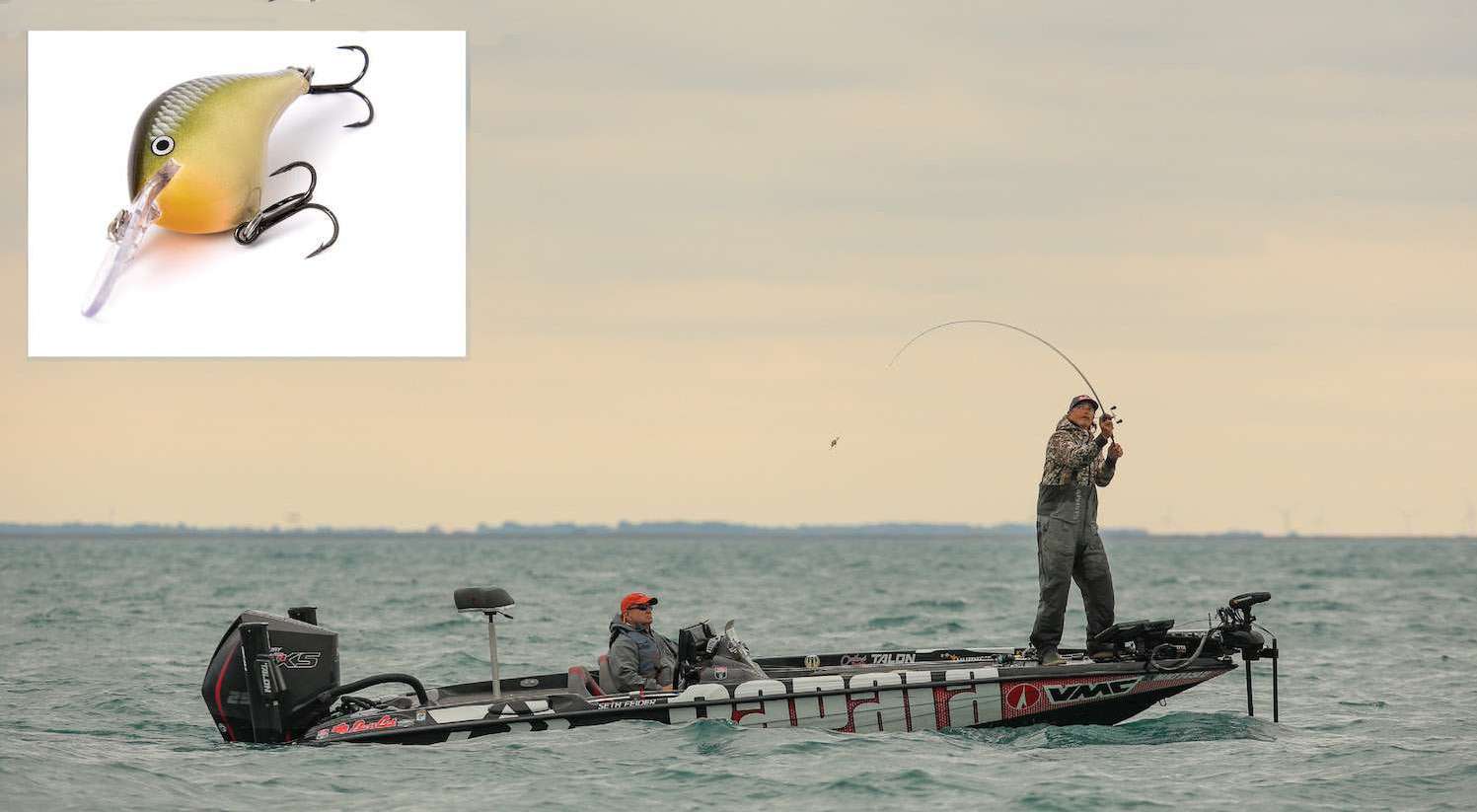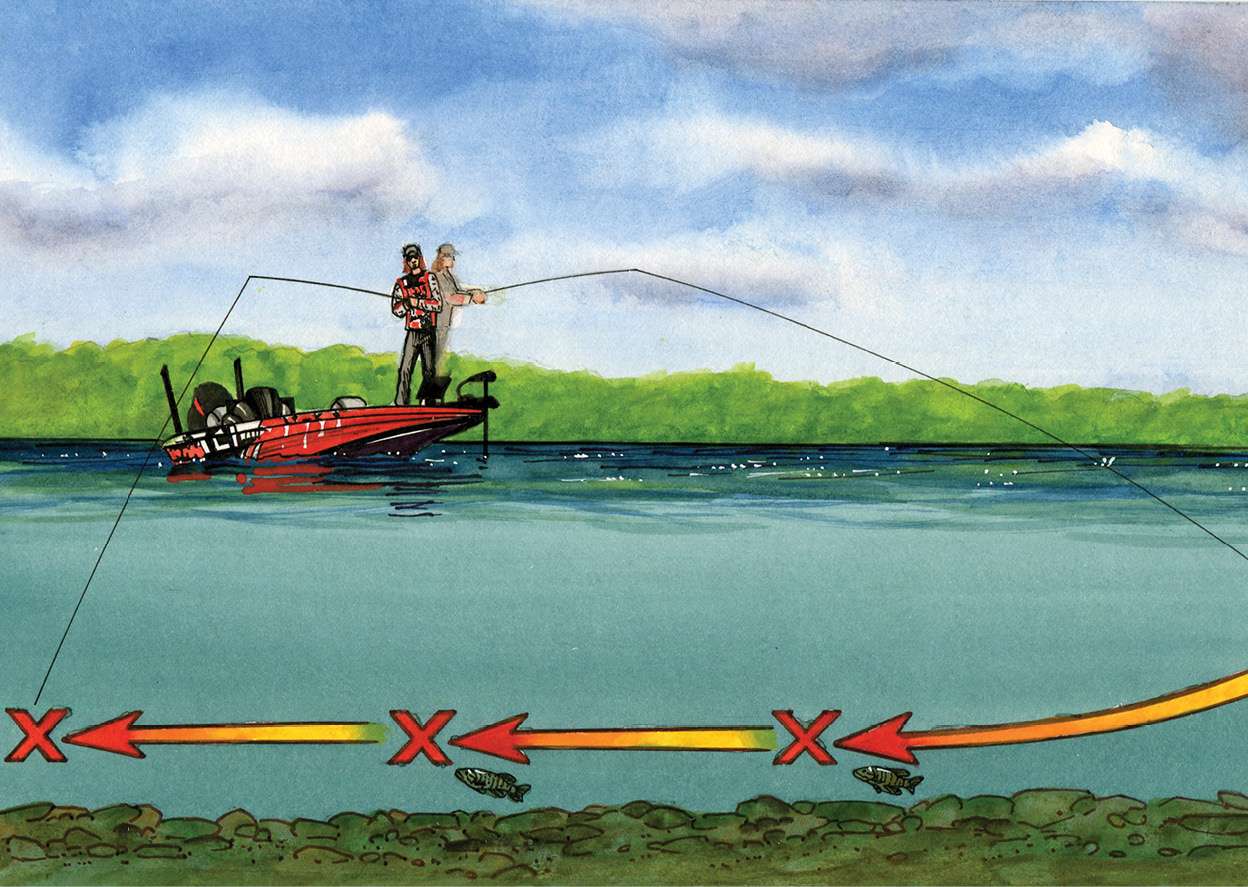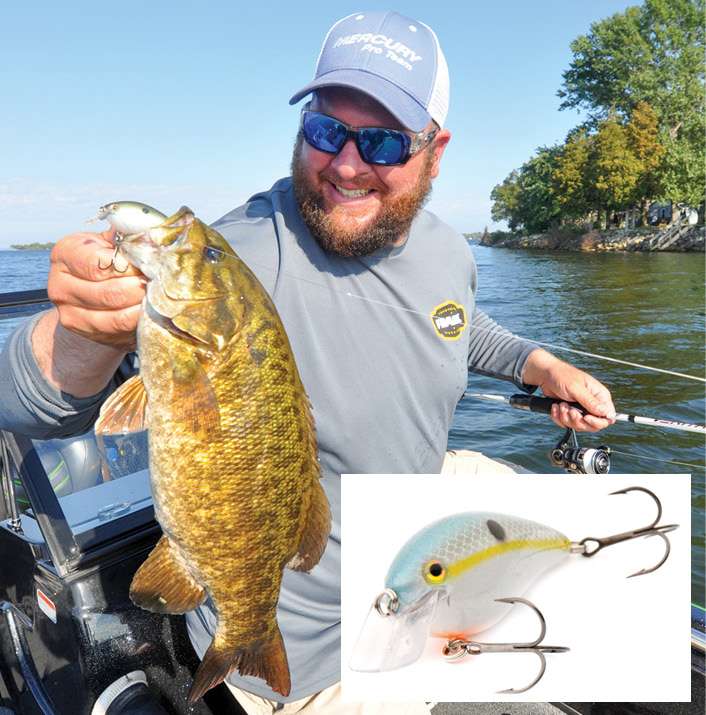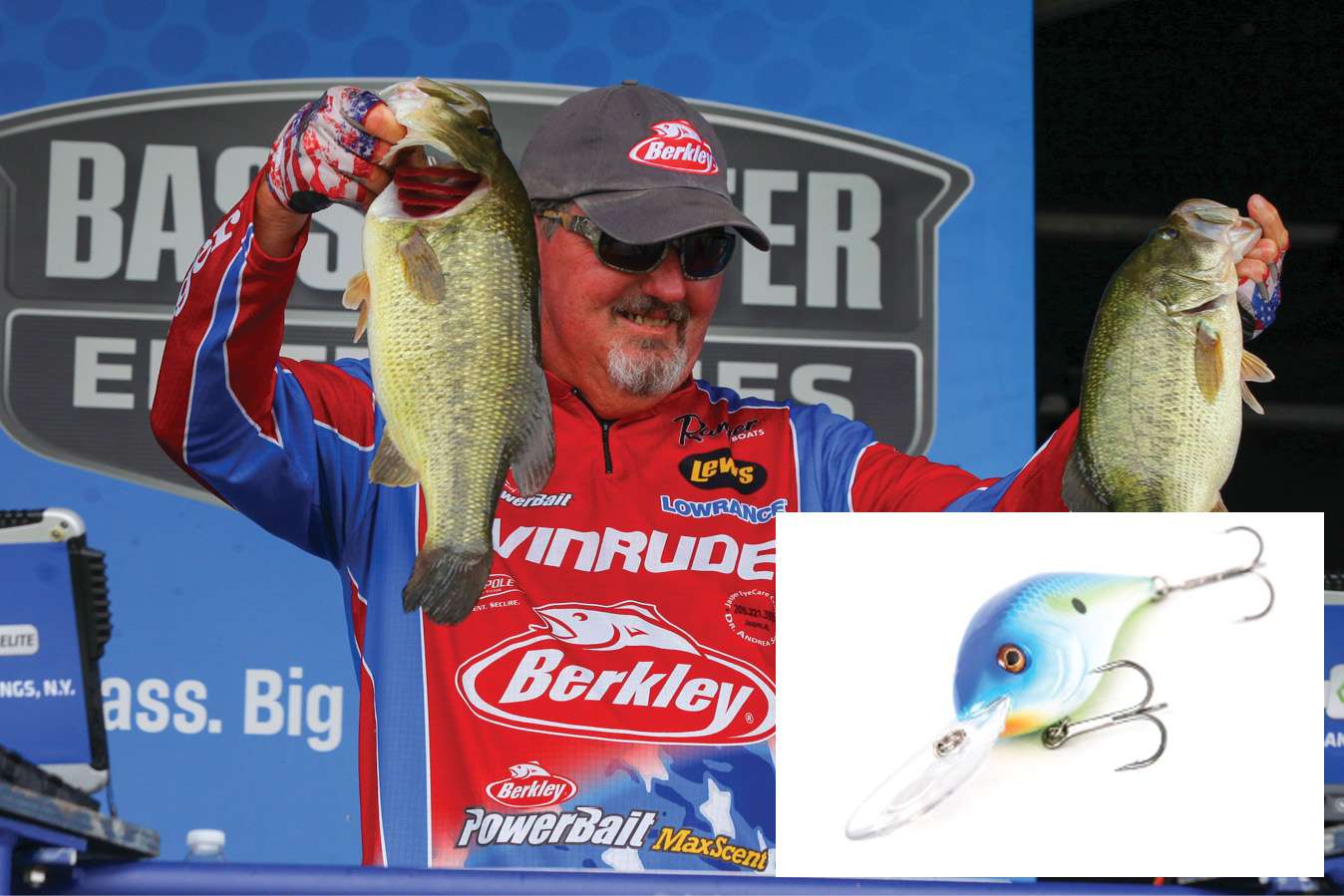
Crankbait fishing is generally regarded as a contact sport. The accepted truth is that you should run a crankbait into the bottom, a boulder, a stump or some other object. This makes the bait ricochet, rebound or do something that disrupts its steady, wiggling rhythm. It is beyond question that an abrupt change in a crankbait’s action triggers reflex strikes from bass.
Bassmaster Elite Series pro Seth Feider of Minnesota is a proponent of full-contact cranking, but there are times when he fares better with no-contact cranking. One of those times was during the 2019 Toyota Bassmaster Angler of the Year Championship on Lake St. Clair, an event he dominated with a three-day total of smallmouth bass that weighed 77 pounds, 15 ounces.
A Rapala DT-10 balsa cranker was Feider’s money bait at that event. He retrieved it over rockpiles 11 to 12 feet deep that were adjacent to the shipping channel near the mouth of the Detroit River.
“The DT-10 was hitting bottom on 10-pound fluorocarbon, so I switched to 12-pound test to keep it up in the 8- to 9-foot range,” Feider said.
No-contact cranking for smallmouth bass has long been a staple for Feider, who may well be the savviest brown bass angler on the Elite Series. Given his success with no-contact cranking, you’d be wise to take note of his theories about why it works so well.
Feeding up
“Smallmouth tend to feed up, which makes them susceptible to lures that move horizontally through the water above them,” Feider said. “Also, because brown bass have small mouths, they can’t inhale a crankbait bumping along the bottom as easily as a largemouth bass can.
“Smallmouth have to pin the bait on the bottom,” Feider said. “They don’t get the hooks in their mouth, and you hook a lot of them in the cheek. When they come up for a bait that’s above them, they get it a lot better. A lot of the bass I caught at St. Clair had the crankbait’s bill sticking out of their mouth.”
Zebra mussels blanket rocky bottoms on many smallmouth waters, which is another good reason for no-contact cranking, Feider added. If you grind a crankbait over zebra mussels, your line will go limp every 20 to 30 casts, he claimed.
“Then you have to search around for your crankbait and hope it’s not too windy to find it,” Feider said.
No-contact cranking works best in clear water because the bass need enough visibility to see the lure swimming above them. Feider prefers to employ this technique in depths ranging from 8 to 12 feet. This allows him to use smaller crankbaits that smallmouth bass can engulf more easily. His favorites include the Rapala DT-6, DT-7, DT-10 and the Storm Wiggle Wart.

This isn’t to say that Feider doesn’t cast larger diving crankbaits for smallies. He has duped the brown ones cranking a DT-16 in 20 feet of water. However, the hookup ratio is not as high as with the smaller crankbaits.
Sweep and pause
Whatever the depth, Feider always imparts a sweep-and-pause retrieve with a 7-foot, 6-inch medium-heavy Daiwa Tatula Elite casting rod. Besides increased casting distance, the long rod lets Feider pull a crankbait briskly ahead for 10 feet between pauses.
“It’s all about making a crankbait erratic with the rod instead of hitting bottom,” Feider said. “A fast sweep excites a smallmouth to run up behind the bait. When you stop, they run into it. Almost all the hits come on a pause. It feels like a jig bite.”
The carbon-fiber Tatula rod is stiffer than a fiberglass or composite cranking rod. Should a piece of floating grass catch on his line, Feider can rip through it and continue his retrieve. This would not be possible with a softer rod.

No-contact squarebills
Marc Jackson, a fishing guide on Wisconsin’s Green Bay, smokes the smallies in early summer and into the fall by burning squarebill crankbaits over rocky bottoms 5 to 10 feet deep on windblown shorelines. His most productive cranker is Strike King’s 1.5, which rarely ticks the bottom.
“Sometimes a straight retrieve works,” Jackson said. “A lot of times you have to crank and stop or pump the rod as you wind.”
Green gizzard shad and chartreuse sexy shad are Jackson’s go-to colors. He believes those colors and the squarebill’s tall profile mimic the alewives the bass feed on here. Since many of his clients are not accustomed to baitcasting tackle, Jackson has them cast squarebill crankbaits with a 7-foot medium action spinning outfit matched with 10-pound Berkley Fireline Ultra 8 Superline Crystal with a 10-pound Berkley Trilene 100% fluorocarbon leader.

Not just for smallies
Legendary Elite Series pro David Fritts claims that he catches more largemouth, smallmouth and spotted bass on crankbaits that never touch the bottom. Given that Fritts is widely regarded as the world’s crankbait master, that’s saying something.
“If you can make a fish come up and hit a crankbait, the strikes are usually harder, and most of the time both sets of hooks are in its mouth,” Fritts said. “When they suck the bait off the bottom, the hooks are outside of their mouths.”
Prior to becoming a professional angler, Fritts won a Red Man tournament at Lake Eufaula by catching hefty largemouth that were on bottom in 24 feet of water. Back then his deepest crankbaits would dive to only 22 feet on light line. Even though his crankbait never touched bottom, he was able to coax the bass up to inhale his offering. His five-bass sack weighed over 32 pounds. For several years, it held the record for the heaviest limit in a Red Man event.
“It’s hard to get a largemouth to come up much more than 2 or 3 feet to eat a crankbait,” Fritts said. “A spotted bass will move up 5 to 8 feet, and a smallmouth will come up 10 feet or more.”
A crankbait’s depth and action are the first priorities when Fritts selects a crankbait. The lure’s color is the next critical consideration. The color of the crankbait’s belly is of utmost importance, Fritts stressed, because this is what a bass sees when it swims up to nab the bait.
As for how to work a crankbait during a no-contact retrieve, Fritts often throws in several stop-and-go gambits. He recalled one outing where almost every bass belted his crankbait the fourth or fifth time he paused it.
Fritts slings crankbaits with one of his signature Lew’s Fritts Perfect Crank Speed Sticks paired with a Lew’s BB-1 Speed Spool casting reel. He stated that the BB-1 is the longest casting reel made, which is crucial for crankbait fishing. Also, the reel’s 5.1:1 gear ratio is perfect for keeping a crankbait “lively.”
Another major feature is that the reel does not have a continuous anti-reverse. This allows the handle to back up slightly when something happens to the crankbait, giving the angler feedback he would not get otherwise. Fritts claimed that the BB-1 allows him to feel when a bass “pushes” his crankbait without actually touching it. When that happens, he twitches or pauses the bait to induce a bite.
To increase his sense of feel, Fritts eschews fluorocarbon line because he claims it has too much stretch. He prefers either Berkley Trilene Sensation Professional Grade multi-polymer or 40-pound Berkley X5 braided line.
“There’s times when you can catch them grinding a crankbait on the bottom,” Fritts said. “To be very successful, you have to learn how to feel the bait running above the bottom. It’s the difference between catching 25 bass a day instead of five.”
Originally appeared in Bassmaster Magazine 2020.





